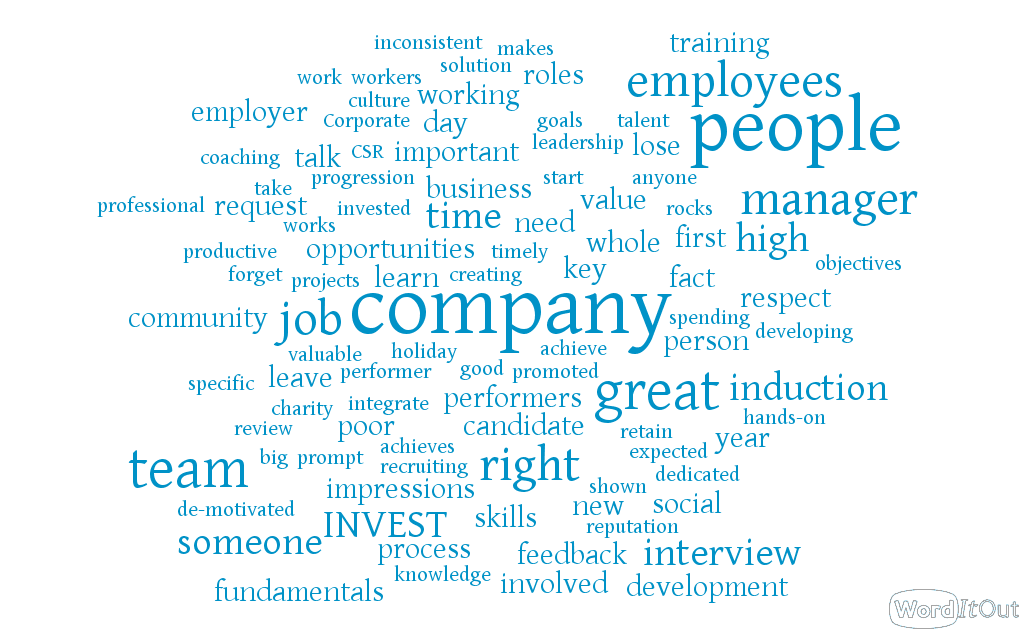The latest hot-topics and employment law updates ●
Blog

The CIPD's annual absence management survey (2016) found that the most common causes of sickness absence were minor illnesses (coughs, colds and sickness bugs), followed by stress.
People managers have a crucial role in managing absence. You need to ensure that not only do you have the right sickness absence policies in place, but that you also provide your people managers with soft-skills training to equip them with the fundamentals of managing absence and having difficult conversations (what they can and can't ask, and what they should be asking). You need to generate buy-in from your managers, ensuring they have a clear understanding of the absence policy and how to implement it.
As with all aspects of people management, no two cases are the same. There will always be an element of using common sense or discretion to apply flexibility in individual cases as appropriate. With the provisions under the Equality Act (2010), you'll also need to educate managers on how to handle absence related to a disability, and what reasonable adjustments may need to be considered. This can be a legal minefield so it's important that it's done right! Your managers will need to be confident, sensitive, with strong interpersonal skills and an ability to adapt their approach depending on the situation. They will also need to give their team their time and dedicated focus.
Effective absence management is about supporting employees with health problems stay in or return to work and balancing that supportive approach with taking a firm and consistent approach with employees who regularly take advantage of the absence policy, or who don't follow your notification procedure.
Other effective ways to manage sickness absence include:
Return to work interviews
The use of trigger mechanisms to review absence levels combined with the disciplinary process when necessary
Restricting sick pay
Involving occupational health professionals
Flexible working
At the end of this article is a case study from one of the managers that we work with, on the approach they took to managing absence within their team.
In addition to providing clear guidelines around the absence policy and how to apply this in practice, managers also need to be able to promote engagement and attendance, as this in turn will reduce absence levels. You need to create a culture where employees feel valued, supported and where there is a mutual respect.
This mutual respect is known as the Psychological Contract, which can be defined as the perceptions of the two parties, employee and employer, of what their mutual obligations are towards each other (Guest et al).
This is where effective and proactive people management is really important, because as soon as the psychological contract is broken, (e.g. if an employee feels unappreciated or unfairly treated), their discretionary effort will be withdrawn and they will be far more likely to wake up and think 'I don't want to go into work today'. Therefore, managing absence is about providing a supportive and engaging workplace prior to employees going off sick.
An increased focus on well-being will aid towards this preventative approach to managing absence. Proactively supporting well-being can prevent employees from going off sick, or help support employees with an issue before it becomes a real problem. In addition, it promotes your organisation as being a great place to work. Consider implementing a well-being policy into the workplace, if you haven't already got one.
CASE STUDY
Absence management, a manager’s shared experience
After a team member returned to work after a few days off with a chest infection, I was quite relaxed about the absence and the return to work process. I think that was my first mistake; considering it a return to work process. If you can, I’d recommend that when you’re carrying out a return to work meeting, you look on it as stage 1 of the absence management process. So, rather than a quick chatty cuppa while you whizz through and tick-off the questions on the return to work form, actually take some time out to consider how it might feel if you were to find yourself using this paperwork as part of the ‘evidence’ for a disciplinary meeting…
· Are you discussing each question in enough detail?
· Are you completing all the sections thoroughly?
· And most importantly, have you discussed the fact that this is step 1 of the absence management process?
· Actually; even before all that, have you given all your team members copies of the absence policy and the disciplinary policy?
· Have you made time to discuss both with all your direct reports at one of your team meetings?
I seriously advise you to do the last 2 actions pretty quickly if you haven’t done so already. Spending time on this away from any specific absences, allows you and your team a chance to read through and digest the policies and supporting processes - without the emotion of an actual sickness or disciplinary situation.
Many employees won’t realise that the absence policy can lead to the disciplinary policy. Make sure you and your team understand both. That’s Step 1.
Step 2 is making the time to work through the return to work form thoroughly if you have a member of staff who’s been off sick. And, before you close each return to work meeting taking time to remind them how the two policies interconnect, making sure they understand what will happen if they’re off sick again and the next stage in the process.
By doing these things you make the disciplinary process just a little bit easier to complete, if it gets to that stage. Hopefully it won’t.
The disciplinary process is not a nice thing to have to go through. I genuinely like and respect and trust all my team members, and I have no reason to doubt their circumstances if they are unwell and unable to make it into the office. They all work hard and demonstrate an immense amount of passion and loyalty to their jobs, our team and me as a manager. However, none of this is relevant and nor is it in question if they trigger the absence management or the disciplinary policies. As managers, we need to work through the supporting processes to ensure that all staff are treated fairly and that we have undertaken the necessary steps to evaluate what action needs to be taken.
So, when I found myself conducting my first disciplinary meeting with one of my team, I wasn’t prepared for how I would feel, or even how they might feel. I know it wasn’t a great experience for them, and thankfully I think I conducted the meeting thoroughly and fairly, and I think my team member could tell I was being objective and fair.
Immediately after that first incident, I spent time with my whole team carrying out Steps 1 and 2 So when the next team member triggered the disciplinary process, I think we both felt in a better position. We both knew it was coming, and although it still wasn’t one of the best jobs a manager has to do, it was (from my perspective) better than the first occasion. And I’m guessing that particular team member felt the benefit of us having discussed both policies openly before the trigger occurred.
Get in touch to find out how we can help you manage your employee's sickness: sarah@swchr.co.uk

How do you retain high performers?
It’s so much more than what you’re paying them. It comes down to your employer brand; and by that, I mean the whole experience someone has, right from the moment they see your advert. In fact, even before that point, as your reputation will be the basis of their first impressions.
First impressions are important. Just as you wouldn’t expect someone to turn up late to interview with you, don’t keep them hanging around either. Be prompt, and be professional. Remember that an interview is a two-way process, and as much a chance for the candidate to learn about the company as it is for you to learn about them.
The interview is a great time to let the candidate know how much you value your employees. Talk to them about the induction, opportunities for learning and development and progression within the company. Talk about the social side of the company, the benefits you offer, and the charitable causes that you support.
Corporate Social Responsibility (CSR) is a big thing. What do you do to give back to the community? Do you raise money for charity, allow a certain number of days off each year for volunteering, do you get involved in community or environmental projects?
All of this stuff is REALLY important… but there’s one thing that I haven’t yet mentioned. And that’s your managers. All too often, people are promoted into line management roles when in actual fact, whilst they might be technically great at their job, they’re rubbish at managing people. Making sure you’ve got the right people in people management roles is one of the key fundamentals in retaining your high performers. What are your managers' people management skills like? If they’re not up to scratch, their team will become de-motivated, less productive, and then they will leave. Which means that you will be losing key talent, and valuable knowledge of the company. Not to mention the cost of recruiting a backfill. And the time it will then take for that person to get up to speed.
Having a poor people manager means you’ll be creating a culture that actually works against what you’re trying to achieve as a company. Employees will lose respect for their manager, and lose respect for you as an employer.
Did you know that 1 in 4 UK managers are rated as 'poor' by their employees? Make sure you have got the right kind of training / development offering for people managers. An off the shelf solution won’t work here. Make sure they know what’s expected of them, and that they are equipped with the basic management fundamentals. Whether it’s having difficult conversations, declining a holiday request, holding a sickness review meeting, responding to a flexible working request or giving feedback to their team.
Did you also know that research has shown that over 58% of employees have looked elsewhere for a job because of their managers, and that a third of workers have faked sick days. Compared to only 10% for those with good managers.
Managers have a pivotal role in how your company achieves its goals. This means that developing their leadership and management skills are critical.
Many years ago, my Grampy once said to me that ‘It’s far worse to have a bad manager, but a great job, than to have a great manager, but a bad job’. And do you know, I really think he’s right. If you’re spending every day with someone who is disrespectful to you, inconsistent in their approach and doesn’t value what you do; let alone provide you with specific objectives and timely feedback and coaching, then this is not the sort of company that anyone, least of all a high performer, is going to want to be invested in. Show them recognition. Value them.
So, when your new employee rocks up for their induction on day one, give them a GREAT induction. One they won’t forget. One that makes them think ‘Wow!’. Make it hands-on, let them get involved with other areas of the business; let them put the jigsaw pieces together. And then? DON’T JUST LEAVE THEM TO GET ON WITH IT!!
Managers need to spend dedicated time with their new team member, and integrate them into the team. As a company, you need to keep them motivated and engaged, giving them a company they will love working for. If you don’t, I give it 6 months... a year max, before that person leaves and you will have to start the whole recruitment and induction process all over again.
Invest in your employees. Invest in your managers. Invest in your business.

When we think of delegating, it is a common misconception that it is just a manager getting rid of some of their work to one of their direct reports, often because they don't have time to do it themselves. Whilst I can't deny that this may happen, this is not delegation; this is dumping.
So what is delegation?
Delegation is much more about looking at the task in hand and thinking about who is best suited to pick up the activity. This may be because their skills and expertise makes them more suitable, or it may be that there is a developmental need. You can therefore delegate to a peer and not necessarily to someone more junior.
It's important that the person delegating does not 'dump and run', but takes time and gives consideration to the information and detail being passed over, making sure that the individual picking the activity up has all the information they need for them to do the best job possible. It may also be that they will need to work jointly with someone else for part of the activity, so they need to know who they may need to liaise with.
With this in mind, delegation is most effective when the person delegating maintains overall accountability for the project or task. This allows them to oversee the general progress without the need for directive or micro management, as the detail should be left to the person carrying out the project. Another common misconception is that once delegated, they abdicate responsibility; yet this is when things can go awry. The individual picking up the work may need further support at a later stage, so this is imperative to keep things on track, especially if delegation is being used as a developmental tool. Even if it's checking-in with them on a monthly basis, it's important that communication remains a two-way process and that expectations are both clearly defined and managed.

'Innovate' is a current buzz word. So how do we innovate performance management beyond the usual SMART objectives (Specific, Measurable, Achievable, Realistic and Time-bound)? Firstly, I feel that I should point out that the improvement that I have just mentioned above should not ever be considered as a performance objective . Why? Because you can improve and yet still not be performing at the required level! What we are aiming for is the BEST, how we can get there and how we can get our employees there (and please no forced distribution curves!).
There are of course, the standard performance reviews and appraisals but this can become a cumbersome paper-pushing, tick-box process which doesn't have any real validity. What we don't want is to create an environment where your staff come in, sit at their desks and do some work in between Facebook browsing so that they can say "I've been at work today" without actually adding any real value . (Yes, I'm thinking of a few individuals right now too!). So, what we need to do is be strategic about the way we manage and embed performance. We need employees to be accountable for their own performance and striving for continuous improvement of business processes, their own skills, behaviours and contributions. Another really important aspect of performance management is feedback, which should always be given regularly and timely i.e. when something has recently happened (this applies to positive and constructive feedback). Have you had any experience with 360 feedback?
Managers can underpin all of this with ensuring alignment to business goals and allowing their staff the opportunity to be stretched and the freedom to do their job (no micromanagement here!). Performance management is a continuous cycle. There's no single best approach; it should fit in with your company and the culture (or desired culture!) and allow for some flexibility. It's about support, not control. Trust your employees to use their initiative. In turn, they are likely to get great job satisfaction, be more engaged and committed and this will all affect the bottom line; business profits, and make your company a great place to work because of the culture.

Larger corporations may have a full suite of HR policies that befit any scenario, polished to perfection. They have done their competitive analysis; they know they want to be an 'Employer of Choice' and they have developed a wide range of family friendly, flexible terms and conditions. Ah-ha.... this will mean they have the pick of the crop. No more hard to fill vacancies for them; you name it, they can offer it: Part-time, zero hours, term-time only, split shifts, annualised hours, flexitime. And a load of top-notch benefits to boot. BUT...
What about the needs of the business? Oh yes.... that. Suddenly when we shine a light on flexibility and haul it in for questioning, doubts creep in. What about the small-medium businesses that simply can't afford to offer this level of flexibility, because it simply means they won't have enough cover in the office without someone there full-time, on a typical 9-5 working pattern?
Except there is no typical working pattern any more. Times have changed. Employees often now want a degree of flexibility, no matter who they work for. The key question here is how often do they want flexibility, how much flexibility do they want and what benefit is there to the business in offering flexibility? If you find the ideal candidate, can you really risk losing them because they want to work 4 days instead of 5 or they need to leave early to avoid the rush hour traffic for the long commute home?
Let's consider your options. Would condensed hours work, or a job share? Or operating a 'core hour' policy i.e. all staff must be in the office between 10-4 but they have flexibility and use flexitime around this. What about working from home if they have to leave early? Being open minded about flexible working doesn't mean that you'll get someone who wants to work part-time and just turn up, do the bare minimum and leave. Of course, you must consider your workforce as a whole (and setting a precedence), and making sure that there is a fair allocation of work and a duty of care to all your employees. This also means being realistic with your expectations as an employer and the expectations of your staff.
Here's where we should be considering a form of mutual flexibility , which brings benefits to both you as the employer and your employees. This could include part-time or home working as functional flexibility , but reducing the use of zero-hours or fixed term contracts. Namely because you won't see the return on investment, but also because these contracts don't offer job security and are unlikely to result in recruiting the right candidate. Higher profitability through people can also be encouraged by allowing more autonomous working and knowledge sharing. Costs can be reduced on overheads through allowing a degree of homeworking or hot desking.
The bottom line is that if your employees feel that you are supporting them, they are more emotionally engaged, more satisfied with their work, more loyal and committed and less likely to resign. There's also been some research on the amount of effort employees put in being enhanced by a greater work-life balance. In short; flexibility can be used as a strategic tool to support improved individual and business performance through greater diversity, brand competitiveness and employee engagement.
All this is great of course, but you'll need to consider and balance the cost of implementing any form of flexible working against the needs of the customer and levels of service. This can be a complex topic and one which falls under the Employment Rights Act in the right to request flexible working for all employees with a minimum of 26 weeks' continuous service. All requests need to be considered in a reasonable manner; have a look at this article for some practical guidance and if you have any queries please drop me an email sarah@swchr.co.uk
http://www.acas.org.uk/media/pdf/g/s/Code-of-Practice-on-handling-in-a-reasonable-manner-requests-to-work-flexibly.pdf

It’s also important for discretionary terms such as bonuses to be considered. Even if it’s non-contractual, once it’s offered it is classed as wages, which means that failure to pay a bonus could result in an employee applying to a tribunal for payment. Express and implied contractual terms need to be carefully considered when drafting an employment contract.
At S. Wilkinson Consulting, we’ve been drafting employment contracts and terms & conditions for many years. If you’d like to chat through our options to make sure your business is protected and employees have access to a document that’s easy to understand please get in touch: sarah@swchr.co.uk or 07891 698 981.

Workers (including employees) are entitled to four weeks' holiday per leave year under the Working Time Regulations (WTR). They are also entitled to the normal equivalent of public and bank holidays each year in England and Wales, which brings the total to 5.6 weeks' leave per leave year. The legal provision for the carryover of leave into the next leave year is only applicable in the following instances:
- If the worker falls ill whilst on annual leave, they may under certain circumstances claim back the annual leave that had been booked (and if they have a 'fit note' from their GP)
- 5.6 weeks' annual leave can be carried over for maternity, paternity, shared parental and adoption leave (or on a pro rata basis for leave less than 12 months).
However, some businesses choose to allow a proportion of annual leave to be carried over and used within the early part of the following leave year. This could either be for those who were unable to take annual leave due to business restrictions, or for the entire workforce. Alternatively, annual leave may be on a 'use it or lose it' basis, so if workers don't use all of their entitlement, they aren't able to carry it over.
Annual leave is not permitted to be exchanged for Payment in Lieu of Notice (PILON) except for when employment is terminated.
When an employee hands in their notice of resignation you will need to calculate their pro rata annual leave entitlement and how much they have taken vs leave accrued. At S Wilkinson Consulting we have many years' experience in the design and implementation of employment contracts including holiday/carryover clauses and calculating the payment or deduction of annual leave (and/or any other salary sacrifice benefits). Please contact us on sarah@swchr.co.uk or 07891 698981 and we will be more than happy to help!

The benefits of collecting HR data is that you have some hard evidence on key metrics such as absence rates, attrition rates and recruitment costs, to name a few. What's also really important is that you must have clear objectives and outcomes for collating these statistics and be able to interpret them within the context of your business. Each business may choose to measure something slightly different, depending on what they are looking to learn. People data can provide a real strategic insight, and once you have measured these metrics you can then start to be more proactive, such as with more effective resource planning, improving employee engagement or retention, and saving costs.

A common problem is that people go into change blindly without understanding the consequences and as importantly, without communicating properly or frequently. Kurt Lewin, regarded as one of the modern pioneers of social and organisational psychology argues that not least, we should be discussing what might happen if we do not change, and therefore communicating the reasons for change is paramount. Indeed, Kim Gieske – HR Director for Planet Organic has given some tips for getting buy-in from senior members of staff, and the most important factor is communication. I have seen this in organisations I have worked for in the past where top-down communication is cited as one of the weakest areas of the business. This says that whilst the Board or the Executive team may have agreed on an agenda, strategy or objective, this needs to be communicated effectively to the rest of the organisation and with their legitimate support. One of the risks of not doing so is developing a 'them and us' culture and resistance to change.
We can also consider the topic of crisis management and how effective leaders can gain buy-in from their followers. Dr Tim Sparkes, Practice Lead & Occupational Psychologist at Hudson depicts how “A true leader must illustrate the ability to convince others that they’re the person to successfully steer the organisation through a crisis... Key to this are facets including persuasion, helpfulness (consideration for others’ problems) and motivation".
HR can not only aid the change management process and ensure that people matters are considered throughout, but also offer Leadership Development programmes and expertise in working with both the Board/Executive members.
Finally, back-on the subject of Brexit, discussions are still ongoing about the effect that this will have on recruitment, staffing levels and an organisation’s ability to meet its objectives. I’ll be attending a CIPD meeting on 27 April to discuss more about the impact of Brexit on HR and what the future of 'Great HR' looks like with the forthcoming challenges we face. I'll follow up with Brexit part 2 after!
